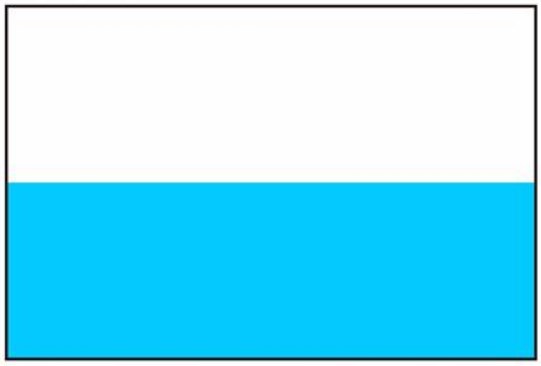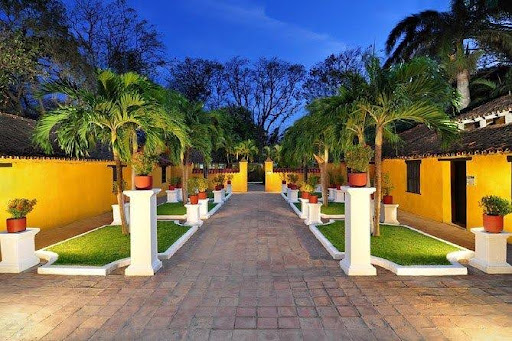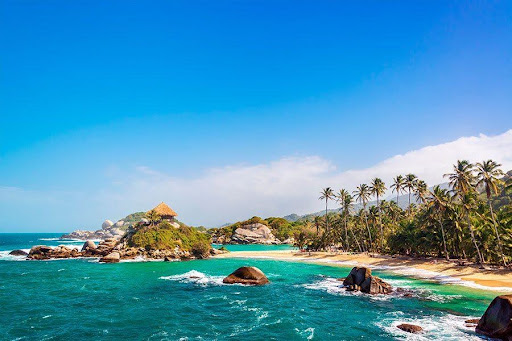Santa Marta
Department

Flag of the city
The flag of Santa Marta is white and blue. Peace, and the melding of all people, are symbolized by the colour white. The blue hue is indicative of the heavens, the oceans, the enchantment of the horizon, and the snowy mountains of the Sierra Nevada.


Slogan of the city
“La Perla de América” is indeed slogan that has been used to describe Santa Marta, Colombia. This translates to “The Pearl of America” in English. It highlights the city’s beauty and significance as a coastal destination on the northern coast of Colombia, overlooking the Caribbean Sea. Santa Marta is known for its natural beauty, historical sites, and cultural heritage, which contribute to its reputation as a “pearl” among Colombian cities. This nickname is often used to promote tourism and attract visitors to the city.
History
Santa Marta, Colombia’s oldest city, was founded in 1525, serving as a colonial port. It later rivaled Cartagena in commerce, especially with banana exports in the 1880s. Despite a decline, the Atlantic Railway connection in 1961 revitalized its accessibility, with higher education provided by the Technological University of Magdalena.
Prior to European arrival, South America was home to various indigenous groups. Limited knowledge exists due to factors like tropical weather, heavy rainfall, and the destruction of records by Spanish conquistadors.
The Tairona established sizable communities with stone pathways, terraces, and agricultural areas. They cultivated crops like corn, pineapple, and yucca and actively traded, including salt. Archaeological sites reveal pottery, stonework, and gold artefacts.

Geography of the city
Santa Marta is located on the northern coast of Colombia, specifically on Santa Marta Bay of the Caribbean Sea, 40 miles (64 km) east-northeast of the mouth of the Magdalena River, within the province of Magdalena. It is situated approximately 992 kilometers north of Bogotá, the capital of Colombia, and about 93 kilometers northeast of Barranquilla. The city is geographically bordered by the Caribbean Sea to the north and west, and it shares its land borders to the south with the municipalities of Aracataca and Ciénaga. Santa Marta’s geographical coordinates are approximately 11.2404° N latitude and 74.1990° W longitude, with an altitude of around 2 meters (6.5 feet) above sea level.

Population
546,000 (2023)
540,000 (2022)
534,000 (2021)
The metropolitan population of Santa Marta in 2023 is 546,000, up 1.11% from the previous year. The total population of the metro region was 540,000 in 2022, up 1.12% from the year prior. The metro area’s population in 2021 was 534,000, up 1.33 % from the year before. There was an increase of 1.15% from 2019 to 2020, with a total of 527,000 people living in the Santa Marta metro region.
One photo representative of the city
“Quinta de San Pedro Alejandrino” the historic estate is famous for being the place where Simón Bolívar, the South American liberator, spent his final days and passed away in 1830. The Quinta is a significant cultural and historical site, and it now serves as a museum and botanical garden. Visitors can explore the beautifully preserved estate, learn about Bolívar’s life and legacy, and enjoy the lush gardens and art exhibitions. It’s a symbol of both Santa Marta’s history and its role in the fight for independence in South America.


Etymology
The name of the Colombian city of Santa Marta is derived from the Spanish spelling of the name “Saint Martha.” The Christian saint Martha is famous for being Mary’s sister and the mother of the revived Lazarus. St. Catherine of Siena is the patron saint of chefs, servants, and hospitality due to the widely held belief that she was the host when Jesus visited her home. During the Spanish colonial period, naming new regions after saints or other religious leaders was a widespread practice. Therefore, Saint Martha received respect when the city was built in 1525 by the Spanish conqueror Rodrigo de Bastidas. It’s possible that this choice was made as a rite of devotion that guarantees the safety and success of the freshly formed community.
What the city is known or famous for
Santa Marta, positioned along Colombia’s northern coastline, is a fusion of historical legacy, vibrant culture, and stunning natural landscapes. Founded in 1525 by Rodrigo de Bastidas, this ancient city reveals its rich past through its preserved colonial structures. Lying between the Caribbean Sea and the Sierra Nevada de Santa Marta – the highest coastal mountain range globally – it offers a diverse array of scenic beaches, lush forests, and towering peaks. Nearby, the Tayrona National Natural Park stands as a testament to nature’s splendor and remnants of the Tayrona civilization. For the intrepid, the Sierra Nevada’s Lost City, predating even Machu Picchu, beckons. Indigenous tribes, such as the Kogi and Arhuaco, add depth to the region’s rich cultural fabric. A historical gem is the Quinta de San Pedro Alejandrino, where the legendary Simón Bolívar spent his last days. Beyond its historical charm, the city buzzes with energetic nightlife and offers a plethora of marine excursions, encapsulating the Caribbean’s vivacious spirit.

